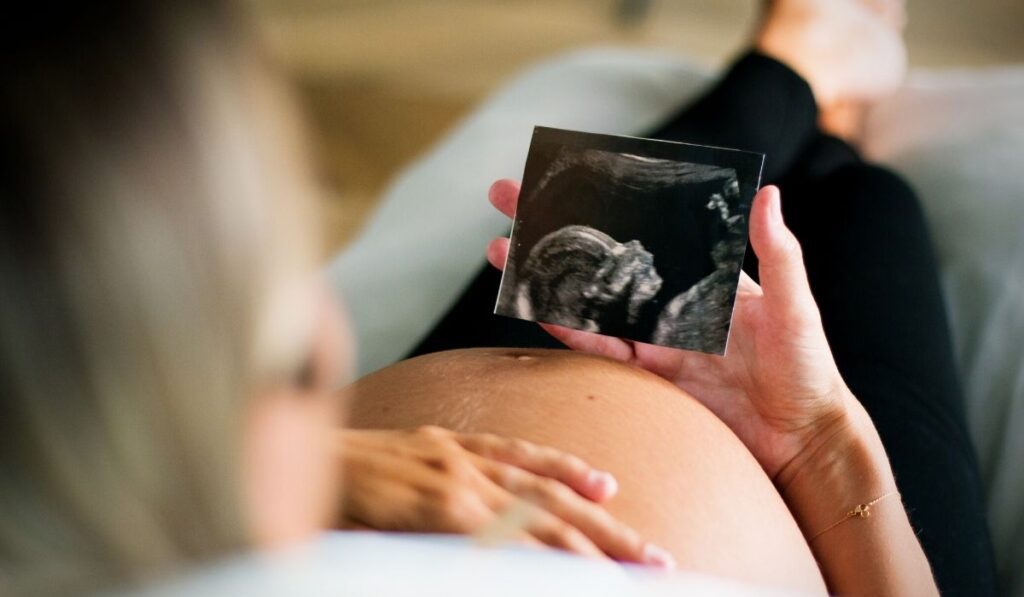A health screening to look for genetic diseases, the conclusion of a child custody hearing or a case involving a significant inheritance are typical examples of instances in which a DNA paternity test while pregnant may be required. These cases include a considerable inheritance. Sometimes, before the baby is even born, the parents will need to establish the identity of the baby’s biological father.
Beginning as early as nine weeks into your pregnancy, you have access to several prenatal paternity testing alternatives if you are required to have one. Due to breakthroughs in contemporary technology, there are extremely few hazards associated with DNA paternity testing at DNA labs; nonetheless, specific procedures are riskier than others. Thanks to these advancements, testing for paternity with DNA has minimal risks to either the mother or the kid.

ALSO READ: Best Time to Eat Oranges: Breakfast, Weight Loss, Pregnancy
Steps Involved in a Paternity Test While Pregnant
The DNA of the kid and the prospective father are compared using a DNA paternity test to determine paternity. These tests are now acceptable in court as having an accuracy rate of 99.99% of the time and are usually acknowledged as being correct. However, paternity tests conducted at home are not considered valid evidence in certain areas.
Why Should One Obtain a Paternity Test?
DNA paternity testing offers a wide variety of possible applications, some of which may not entail a confrontation with the law. For instance, if the parents want to ensure that their child has a complete medical history, they should verify their child’s ancestry. It’s possible for a parent to feel the need to demonstrate paternity to his kid. It may be necessary to do a paternity test to conclude the processing of certain legal advantages, including inheritances and payments from social security. In these circumstances, DNA paternity tests while pregnant may become legally and personally required to prepare for the child’s future and the parents.
ALSO READ: Pregnancy Diet: Essential Food For The Baby and The Mother
Different Types Of Paternity Tests Are Available
Suppose a DNA paternity test is necessary before the baby is born. In that case, the approach considered the most straightforward and used most often is referred to as a non-invasive prenatal paternity test or NIPP. Paternity may be determined by this test, which has an accuracy rate of up to 99.99% and needs nothing more than a blood sample from the mother and the father.
After the eighth week of pregnancy, fetal cells mix with the mother’s blood. This enables medical professionals to get a sample of the baby’s DNA without physically accessing the womb. To establish paternity, a genetic profile may compare the cells found in the mother’s blood with those found in the father’s blood.
Chorionic Villus Sample
A chorionic villus sample, often known as a CVS, may be performed between 10 and 13 weeks into pregnancy to establish paternity. This procedure requires that a needle be put through the cervix and guided by ultrasonography to harvest chorionic villi, referred to as uterine tissues. Because they include the infant’s genetic makeup, these samples may be compared to a possible father’s DNA sample.
The results of these tests are accurate to within 99% of the time. On the other hand, they are associated with a miscarriage rate of around 1% of the time.
Amniocentesis
Amniocentesis, like CVS, has an accuracy rate of around 99% but also brings the possibility of an abortion. In addition, this surgery may induce adverse effects such as discomfort and bleeding in the vaginal area.
Invasive Testing
Considering the potential consequences, you may be surprised that physicians still recommend intrusive diagnostic procedures. These days, the non-invasive test is nearly always the one that is utilized when determining paternity is the only thing that has to be done. On the other hand, the other approaches generate additional data, which the parents would want to make other choices.
For instance, invasive sample techniques may be used to ascertain features of a child’s health state, such as the identification of genetic abnormalities. The findings from an invasive test may lead to the decision to perform a selective termination of pregnancy or abortion on a fetus that has been identified as having one of these illnesses.
Can You Do a DNA Paternity Test While You are Pregnant?
DNA paternity testing while pregnant can change a child’s legal standing, the amount of inheritance they are entitled to receive, which parent has custody of them, and many other aspects of their upbringing. Because of this, early testing is necessary for a lot of different parents. To address any questions or concerns about paternity before the child’s birth, medical professionals can do paternity tests beginning as early as the eighth week of pregnancy.
